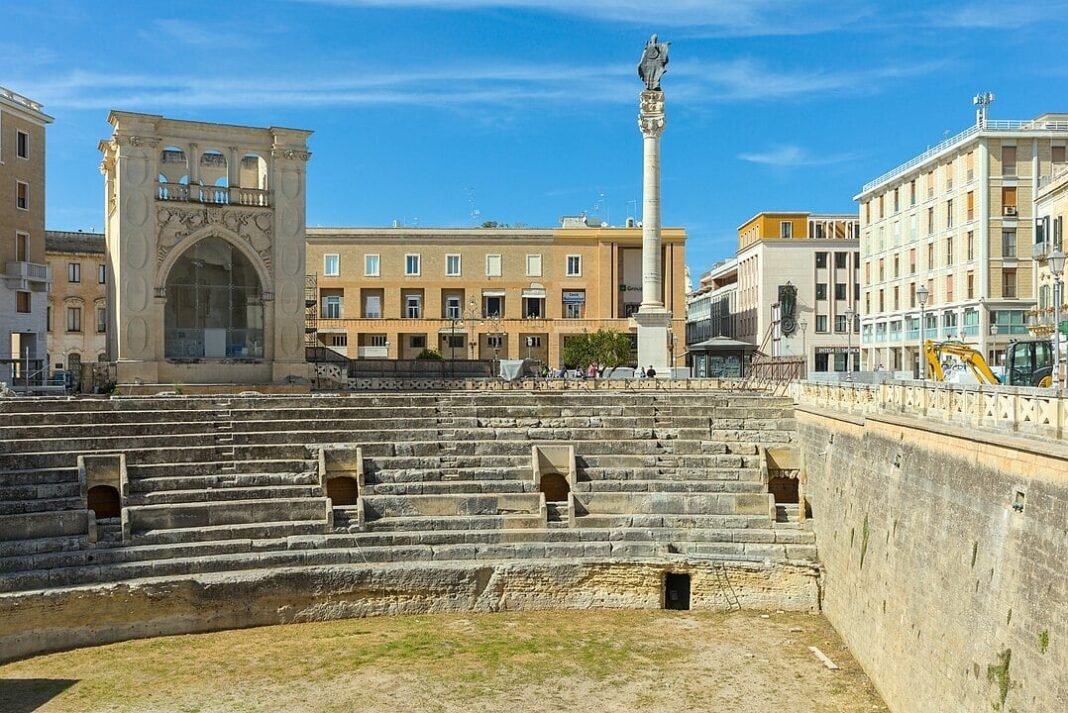
While it’s often said that Roman society merely expanded on Greek creations and made them bigger, to claim that Roman engineering simply replicated Greek architecture entirely misses the essence of their innovation.
The relationship between Greek and Roman engineering and architecture is one of mutual influence, correlation, and continuous improvement. It wasn’t a matter of imitation, as we so often say; it was a bold and radical transformation that did not merely comply but expanded and redefined the original ideas.
The Romans scaled up the Greek blueprint, absorbed its spirit, and forged it into something new. It was with fire, concrete, and an ambition that the Greek world rarely possessed that the Romans managed to expand upon what the Greeks had left them. This is, in essence, the story of how an empire’s practical ingenuity perfected the artistic and philosophical vision of the Greeks.
Greek architecture and external perfection
To admire the engineering beauty of a Greek temple, we need to understand a form of architecture built for the gods—one designed to be worshiped from the outside rather than inhabited from within.
The Parthenon, for instance, is a monumental work of public sculpture, created to represent the goddess Athena’s divine perfection. The Greeks mastered a visual language of harmony, balance, and proportion through their famous Doric, Ionic, and Corinthian orders.
Their post-and-lintel system of construction was refined and elegant, but its applications were constrained by the method itself. It created a world of precise lines and breathtaking facades, but it was not intended to enclose large gatherings of people. Greek temples were, after all, expressions of devotion rather than spaces for congregation.

Greek architectural genius was focused on the exterior rather than the interior. It was an expression of a philosophical and aesthetic ideal, meant to be admired under the clear light of the Mediterranean sun. It was indeed perfect, but it was a perfection defined—and limited—by its very nature.
How Roman engineering attempted to unlock the space within
The Romans, on the other hand, faced quite a different set of challenges. An empire of millions required vast public spaces for the masses—bustling law courts, communal baths that served as social hubs, and grand arenas for spectacular (and often brutal) entertainment. This practical need for enormous, functional interior spaces pushed Roman builders to innovate. Their solution came in two parts.
First was the arch. By mastering the arch, the vault, and eventually the dome, the Romans learned how to distribute weight more efficiently and liberate interior space, creating vast, uninterrupted interiors that the Greeks had rarely envisioned or attempted.

Second was their secret weapon: opus caementicium. This was more than just concrete as we know it. It was a revolutionary advancement in building materials—strong, durable, and remarkably versatile, it could be produced almost anywhere by a relatively unskilled workforce. This innovation liberated the Romans from the slow, costly process of quarrying and carving perfect marble blocks, as the Greeks had done.
It was this very material that made possible the seemingly impossible coffered dome of the Pantheon—a brilliant testament to the Romans’ engineering ingenuity and a defining leap that transformed the world of architecture and construction forever. But the Romans did not abandon Greek beauty in favor of their newfound engineering power. In fact, they did exactly the opposite. They fused the two traditions, creating a potent new architectural language that would define Western civilization for centuries to come. There is no better example of this synthesis than the Colosseum in Rome.
Look closely at its iconic exterior, and you’ll see the story of architecture itself. The ground floor is supported by sturdy Doric columns, a clear nod to the Greeks’ oldest and strongest order. Above that rises the more graceful Ionic, and, at the very top, is the ornate Corinthian. It stands as a beautiful tribute to Greek aesthetics and to the enduring elegance they imparted to the architectural world.
However, this elegant facade is pure decoration. The real miracle of the building—one that hosted up to 50,000 cheering Romans—lies in the brutal strength and ingenuity of the Roman arch and vault system, hidden just beneath the surface. This fusion of Greek form and beauty with Roman function and engineering set the standard for civic architecture for the following two thousand years. Its influence can still be seen in the grand arched halls of museums and the domed capitols of modern governments across the world.
It is safe to say that the Romans recognized the sublime artistic genius of the Greeks, and instead of merely copying or discarding it, built upon it. They honored its beauty while overcoming its physical limitations. In doing so, they created an architectural style not only for the ages but one that continues to shape the world we live in today.


